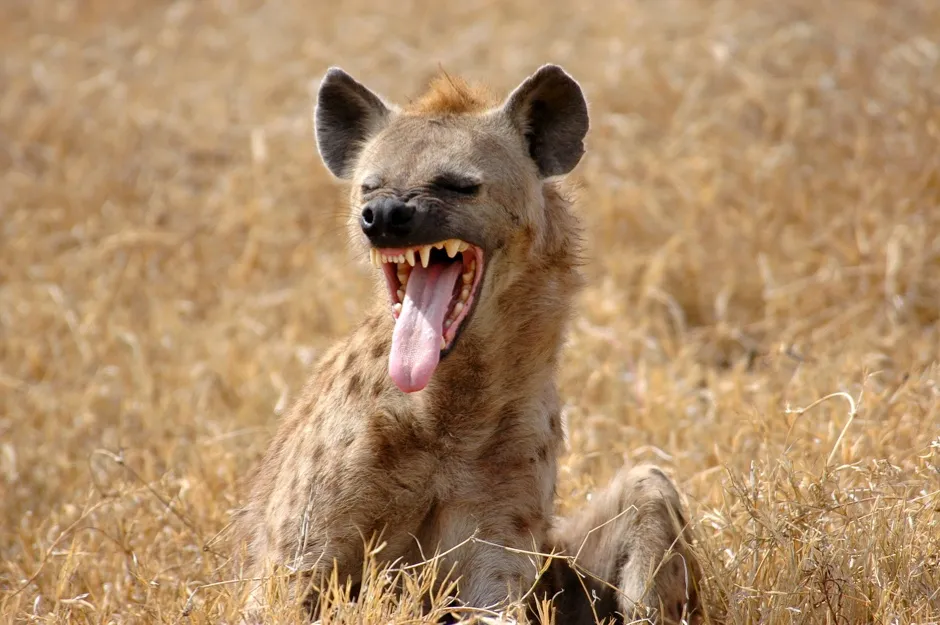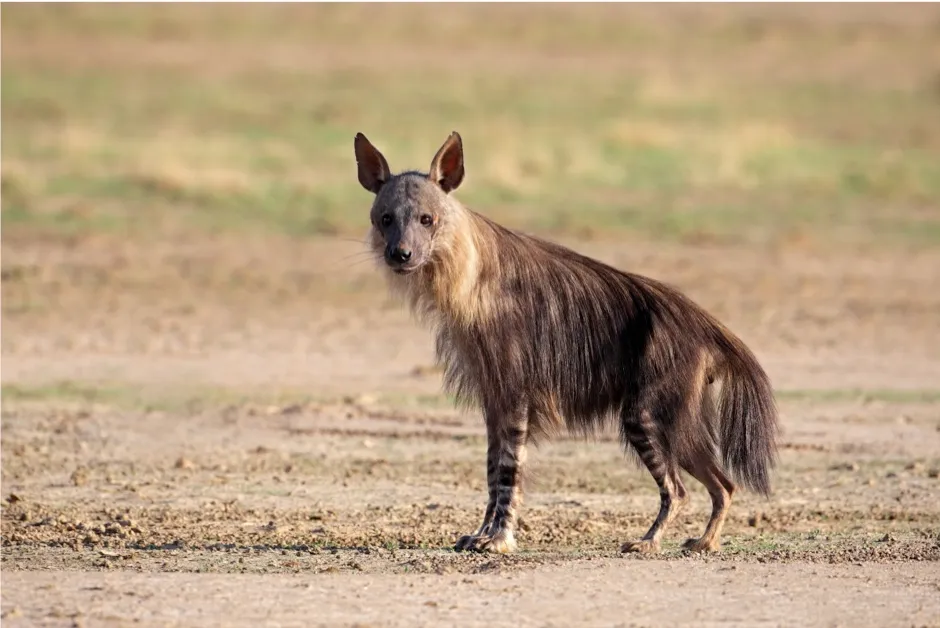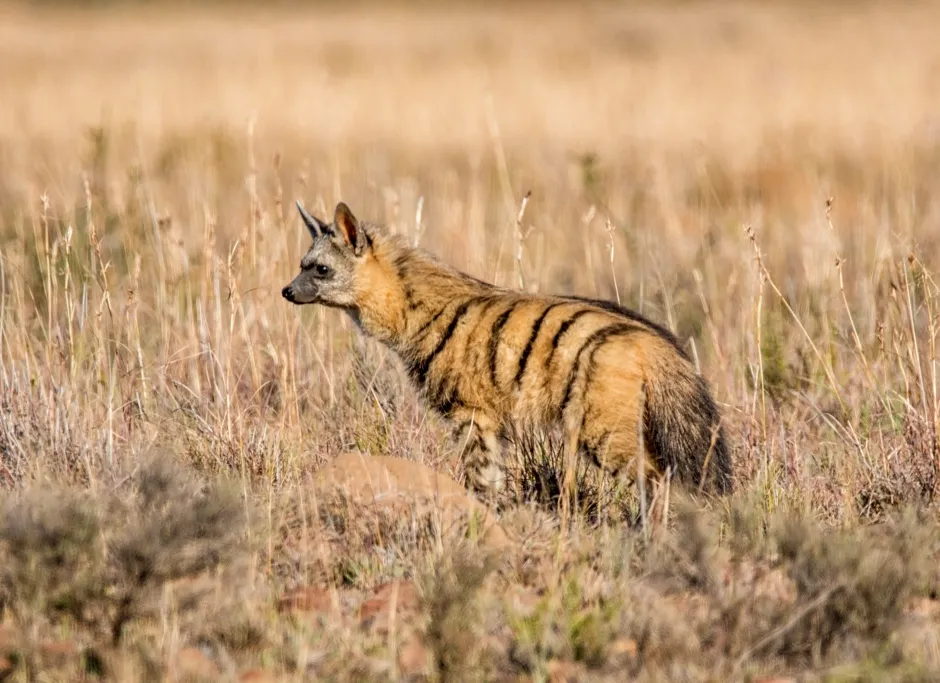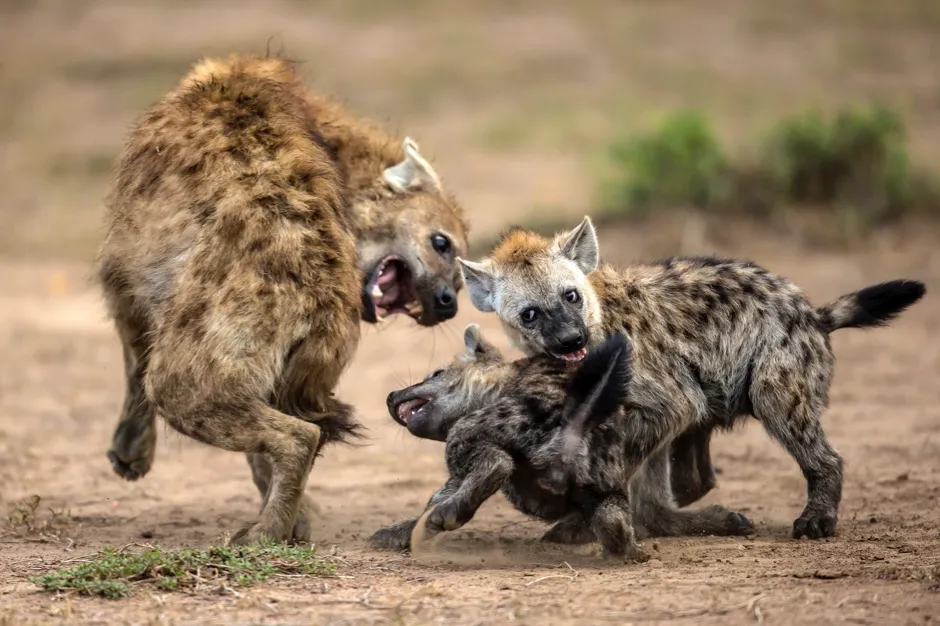Throughout history, few animals have enjoyed less sympathy or worse press than hyenas. Hyenas are often misunderstood and persecuted, and are frequently regarded as vermin and a liability to local communities.
Since ancient times, many cultures have despised them for their reputation for digging up corpses and attacking children and livestock. They are seen as cowardly and dirty creatures, associated with myths, such as hermaphroditism, and their body parts are used in traditional medicine and magical rituals.
Even contemporary films, such as The Lion King still portray them as miserable animals. However, the reality is very different and hyenas have proven to be beautiful and fascinating creatures, with surprising social behaviours, that play an essential ecological role in the ecosystems they inhabit.
The family Hyaenidae includes four living species. Three of the species have teeth and skulls adapted to cracking the bones of prey and carcasses: the spotted hyena (Crocuta crocuta), the brown hyena (Parahyena brunnea), and the striped hyena (Hyaena hyaena). The fourth species, the aardwolf (Proteles cristatus), is a termite-feeding specialist and the only surviving member of the subfamily Protelinae.

Despite their dog-like appearance, these carnivores are more closely related to catsand other feliforms, such as civets and mongooses, than they are to caniform carnivores, such as dogs and bears. Fossil data suggests that hyenas shared a common ancestor with other feliforms about 29 million years ago, in the middle Oligocene period.
All four hyena species alive today probably originated in Africa, withancestors who arrived earlier from Eurasia, crossing the Gomphotherium land bridge, in what is now known as Saudi Arabia.
The bone-cracking forms appeared relatively late in this evolutionary history of the Hyaenidae family, during the late Miocene epoch, with fossils dating from the late Pliocene. The aardwolf is also recently derived, appearing for the first time in the Pleistocene.
The diversity and geographical distribution of the family Hyaenidae was much greater in the past, with more than 60 species described through fossils. They were distributed throughout Africa, Eurasia and, intermittently, even North America.
Currently, the spotted hyenas exist only in Africa, south of the Sahara Desert, except in the dense rainforests of Central Africa and a large area of South Africa, from where they have been exterminated.
The striped hyenas have a wide geographical distribution, ranging from the Middle East, Caucasus region, Central Asia, and the Indian subcontinent, with their southern and western limits in Africa.
The brown hyenas are confined to southern Africa and the aardwolf has a disjointed geographical distribution, with populations in southern Africa, widely separated from the populations of East Africa.
Hyenas have a wide tolerance of habitats, from semi-desert, savanna, and open woodland to dense, dry woodland. The spotted hyena can also be found in mountain habitats.
Anatomy of hyenas
All hyenas have four digits on the forelimbs and hind limbs, with the exception of the aardwolf, which has five digits on the forelimbs. Their claws are blunt and non-retractile. They have a shaggy coat, a mane on their back, and a short, bushy tail.
The jaws of the brown, spotted, and striped hyenas are very powerful, and their dentition is adapted to both meat-eating and bone-crushing, but the aardwolf, which is uniquely adapted to an insectivorous diet, displays a reduced dentition.
The spotted hyena is the largest species alive today, weighing between 55 and 81kg, with a body length of between 95 and 165cm and a shoulder height of 80cm. Its forequarters are large with a massive neck, the back is sloping, and the hindquarters are rather weakly developed.
It has a big head, with a short, obtuse, dark muzzle, and rounded ears. Its coat is coarse, pale buff to greyish-brown, with irregular dark brown spots, and a short erect mane on the neck and shoulders.
Female spotted hyenas are highly aggressive, tend to be larger than males, and have male-like genitalia with a pseudophallus and pseudoscrotum.

Spotted hyena © Getty ImagesThe brown hyena is an intermediate-sized hyena, smaller than the spotted hyaena, weighing between 28 and 50kg, with a body length of between 110 and 135cm and a shoulder height of 64 to 88cm.
Its coat is long and shaggy, dark brown to black in colour, with a white neck-ruff, long hair along the back and pointed ears. The forequarters are well developed in comparison with the hindquarters, giving a sloping outline to the back.

The striped hyena is also an intermediate-sized hyena, weighing between 26 and 41kg, a body length of 100 to 115cm and a shoulder height of 66 to 75cm. It has a long head, long pointed ears, sloping back, and a long, bushy tail.
Its coat is long, coarse, and shaggy, pale grey to light brown or buff in colour, with vertical stripes, and a distinct black-tipped mane from neck to rump that can be erected to make the animal look larger.

The last and smallest of the hyenas, the aardwolf, is slightly larger in size than a fox. It weighs 7 to 13kg, has a body length of 55 to 80cm and a shoulder height of 48cm.
It is a lightly built hyena, with a dog-like head, a shaggy coat, yellowish-grey in colour, with dark stripes, a long erectile mane, and a bushy tail.

Hyena life
Different hyena species vary from each other in their behaviour and social organisation. The spotted hyenas are gregarious animals that live in large complex matrilineal social groups, known as clans, whose members have different roles and hunt cooperatively. They display intriguing behavioural complexities that parallel those of many old-world primates.
Brown and striped hyenas are nocturnal and may form small clans and their individuals interact with each other and demonstrate complex social behaviours, although both species forage alone.
At the other end of social organisation, we find theaardwolves, monogamous animals that feed alone, and that are uniquely adapted to a diet consisting nearly exclusively of harvester termites.
Hyenas employ great variety of tactile, visual, vocal, and olfactory systems of communication. The spotted hyenas are also known as 'laughing hyenas' due to their giggle vocalisation sounds, similar to hysterical human laughter, used, along with other vocalisations, as a form of communication to recognise themselves, to defend their territory or to maintain the complex structure of clans.

Hyenas also communicate by smell, and will scent-mark in several ways, by pasting, scratching, and using latrines. Unlike other carnivores, they do not use urine for scent-marking. Pasting is a scent-marking method exclusive to hyenas, consisting of smearing strong-smelling anal gland secretions, produced in the anal pouch, onto objects in their range.
The most striking visual display of hyenas is piloerection: the bristling of the long hair over the back and neck making the animal appear larger, which occurs in any situation where there is a tendency to either attack or flee. The spotted hyenas have also developed complex visual communication patterns, with elaborate head and tail movements and meeting ceremonies.
The four current species of hyena occupy three different feeding niches. Aardwolves are strict insectivores, striped and brown hyenas feed mainly on carrion, and spotted hyenas are effective predators that feed mainly on medium and large antelopes that they hunt themselves.
Although the four species share part of their time with others, they are all solitary foragers, except spotted hyenas, which hunt both alone and in large groups.
The spotted hyena is still perceived by many, erroneously, as a scavenger that feeds on leftovers from other carnivores, such as lions or leopards, or that feeds on carrion. While it's true that spotted hyenas can scavenge opportunistically, they are very efficient hunters, tremendously versatile in choosing their prey, with numerous hunting techniques, which directly kill 60 to 95 per cent of the food they eat.
The three species of bone-cracking hyenas are able to eat and digest all parts of their prey, except for the hair, hooves and keratin sheath of antelope horns. They digest the bones completely, so that only their inorganic components are excreted in the stool.
Bone-cracking hyenas, particularly the spotted hyena, can generate impressive bite forces, capable of breaking the leg bones of a giraffe. This ability to break and digest bones, provides them with a food source inaccessible to other carnivores.
The future of hyenas
The poor reputation of hyenas and a lack of knowledge about many aspects of their behaviour have not contributed to the adoption of measures aimed at its conservation.
For the time being, the spotted hyena is considered to be safe, at least in nature reserves, although there is a continuous decline of its populations outside these protected areas.
Read more about threatened animals:
- Lack of regulation in pet reptile trade could be putting thousands of species in peril
- Can we save the insects?
- Zoology in 30 seconds: conservation and extinction
The striped hyena, listed as Near Threatened by the International Union for Conservation of Nature (IUCN), is endangered in many places throughout its distribution, with only six countries having populations exceeding 100 individuals and only two of these, Egypt and Kenya, having populations exceeding 1,000 animals.
Despite these figures, no country allocates specific conservation measures for the striped hyena, and the lack of information about its behaviour further complicates things. Even today, the striped hyena is often hunted and poisoned in most of its range.
The brown hyena is also listed as Near Threatened, with a total population estimated between 5,000 and 8,000 animals, making this species one of the rarest large carnivores in Africa. They are often persecuted, because of the mistaken belief that they attack livestock.
Aardwolves are not in danger and have a wide distribution, although they are rare.
Felids and Hyenas of the World: Wildcats, Panthers, Lynx, Pumas, Ocelots, Caracals, and Relatives by José R. Castelló is available to pre-order now (£25, Princeton University Press).